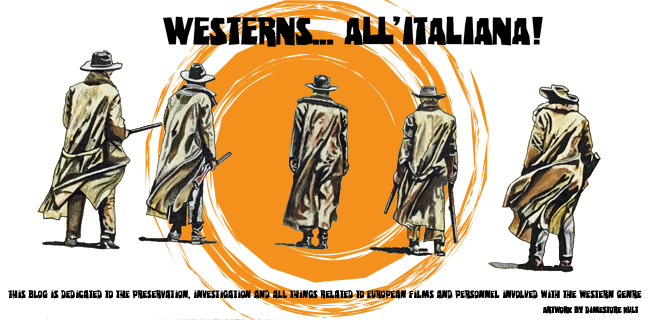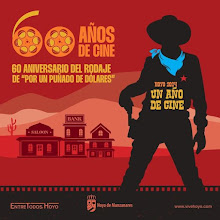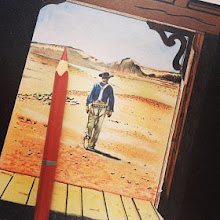Rafael Hernández came to the world of cinema by chance
and managed to find his space in Spanish cinema, appearing in more than 200
films. Although his performances were often fleeting and interpreted certain recurring
roles, his recognizable face, his voice often and serious, wearing a resounding
mustache, along with his interpretive ability remained in the memory of the
viewer, so inevitably he should occupy his Space in this blog.
OF PROFESSION: MUNICIPAL POLICE. OF VOCATION: ACTOR
Esteban Rafael Hernández Herrero, his full name, was born
in Madrid, on August 3, 1928, son of Isidro Hernández and Josefa Herrero.
Rafael was a driver of the municipal police, when the
accident caused him to intervene in the film "Manolo, Guardia
Urbano", produced in 1956, starring Manolo Morán and Julia Caba Alba and
directed by Rafael J. Salviá, who needed to shoot for The collaboration of the
police force. And here entered a young Rafael, at the time of 28 years, making
a brief appearance practicing his profession in one of the scenes of the film.
The first performance of Rafael in the cinema in
"Manolo, urban guard".
From this moment, Rafael Hernández did not stop working
in the cinema. In fact, that same year he takes part in four more films:
"The Apprentice of Bad" by Pedro Lazaga, "Los ángeles del
volante" by Ignacio F. Iquino, (in both, again police, "Man traveling
slowly" Of Joaquín Romero Marchent (who gave me to know my friend Juan of
the Brave Cafeteria and singer of the group Wau and Arrrghs !!!, to which I
give thanks), where he changes record, next to the great comedian, Gila And
"The Girls of Blue", again with Pedro Lazaga (although some sources
do not quote it).
Hasa at the end of the 1950s, continues to appear in
small roles in films such as "The Girls of the Red Cross", again
under Rafael J. Salviá, "Los Tramposos" by Pedro Lazaga and "El
Día de los Enamorados "by Fernando Palacios.
In 1960, he participated, among others, in "The
Colossus of Rhodes" by Sergio Leone, probably in a brief police role in
"091 police on speech" by José María Forqué, in "The lie has red
hair" by Antonio Isasi In "The Economically Weak" of prolific
Pedro Lazaga, as a fervent fan of the "Cantalazo" football club.
In 1961, he appeared as a figure in "Screams in the
Night" by Jesús Franco and in a role, practically without a phrase, but
more lucid, as a thief protected by San Martín de Porres in "Fray
Escoba" by Ramón Torrado, as well as in " Margarita is called my love
"by Ramón Fernández and" Martes y Trece "again with Pedro
Lazaga, among others.
Mourning help to René Muñoz in "Fray Escoba"
In this decade, it appears probably in more than 60
films, sometimes fleetingly and without credit, others with greater protagonism
and in the titles of credit, as happens with many actors of distribution of the
time.
It seems that one of his brief and perhaps unrecognizable
appearances was in David Lean's masterpiece, "Lawrence of Arabia" of
1962, (partly shot in Spain) as one of the Turkish soldiers. To contrast, he
also appears, again in his police service, in "Rocío de La Mancha" by
Luis Lucia.
At the national level, that same year, he acts in the
sequel to the success of Jorge Rigaud, "El día de los enamorados",
titled "Vuelve San Valentín" by Fernando Palacios.También find him,
passing quickly with his motorcycle, in the magnificent Comedy "Atraco a
las tres" by José María Forqué ", in" Cristo Negro "by
Ramón Torrado, along with José Bódalo," in the large cast of "Teresa
de Jesús" by Juan de Orduña, soldier of the Holy Inquisition, In
"School of Seducers" by Leon Klimovsky, "The Grain of
Mostaza" by José Luis Sáenz de Heredia, "Rogelia" by Rafael Gil
and "The Rights of Women", again with Sáenz de Heredia.
In this time also begins his works in films of the west
shot in Spain, as much by Spanish directors as foreigners. Thus, we can mention
"Brandy" by Borau, "The Cuatreros" and "Relief for a
Gunman", both by Ramón Torrado, produced in 1964.
The year 1964 was also the beginning of Rafael on
television, acting in three episodes of the series "Confidencias",
titled "The visitor", "The simple things" and "Poor
Mr. Tejada". In an interview with him in 1975, he commented that he was
considered a professional actor (that is, living in his profession) since
October 1964, perhaps when he saw that he was already assiduously assiduous in
different media, playing different roles.
It begins the year 1965, with its interpretation in
"Stories of the Television" of Sáenz de Heredia, interpreting very
"ad hoc", to an antenista. This year we can also highlight the role
of a mountaineer, with his beard and his beaver cap, in Ramón Torrado's
"The charge of the mounted police" or as "El Narices",
delinquent, in "Escalada de la muerte" Manuel Torres. In television
he takes part in "Goyescas", in the program "Saturday 64".
In a couple of scenes from "La carga de la policía
montada"
El año 1965 se cierra con una breve pero intensa
actuación dramática en uno de los westerns de la época, "El proscrito del
Río Colorado" de Maury Dexter.
In his great performance in "The Outlaw of the
Colorado River"
And as proof that there is still much to find out to
complete filmographies, I have to thank Luis Rosado, have found another
fleeting performance of Rafael Hernandez, in a film that is not included in his
filmography, "A vampire for two" of the year 1965 , Directed by Pedro
Lazaga and interpreted by Fernando Fernán Gómez, Gracita Morales and José Luis
López Vázquez.
Between 1966 and 1969, towards the end of the decade, we
can find him, again with Saenz de Heredia, in "Trial of Skirts" or
"But in what country do we live?", Repeating with Ramón Torrado in
"Clarines y Campanas" or with José María I forked, in "Zarabanda
bing bing", in "The art of not marrying" by Feliu and Font
Espina, in "40 degrees in the shadow" of Mariano Ozores, the
western-comic "Two caresses in Texas "by Michele Lupo, in"
Hamelin "with Miguel Ríos in the role of flautist and Rafael in the role
of the town crier and" Mi husband and its complexes ", both by Luis
María Delgado and José's" Golpe de Mano " Antonio de la Loma, who
will bring you good news, as we will see.
Other comedies include "A Decent Adultery" by
Rafael Gil or directed by Javier Aguirre in "Once a year being hippy does
not hurt", accompanied by Concha Velasco, Alfredo Landa, Manolo Gómez Bur
and Saza, as well as the prolific Pedro Lazaga, in "Novios 68",
"How are the women" or "The girl of the announcements".
With an evil face in "A Fistful of Knuckles", a
western comedy.
For television, he only has time to appear in an episode
of the series "Diego de Acevedo", titled "El cadet San
Martin" and where he plays the assistant of a general.
The year 1970 will open with good news, as Rafael will
get a recognition for his work, by winning the National Syndicate of the Show
award for best supporting actor, for his role in the previous year's film,
"Golpe de Mano" Of José Antonio de la Loma.
In the first five years of the 70's, he continues to play
in various films, although often in comedies, some films with a more critical
tone and, finally, horror films, of uneven fortune. Among the first, to mention
just a few, we have Javier Aguirre's "Astronaut", "A lady named
Andrés" by Julio Buchs, "Don erre que erre" by Sáenz de Heredia,
"" Come to Germany, Pepe "by Pedro Lazaga , The unclassifiable
"The Strange Love of the Vampires" by Leon Klimovsky or "The
Knights of the Anchor Button," a new version of Ramón Torrado's
"Anchor Button," in which Rafael reinterprets the original role of
Xan das Bolas, if Well, it appears folded, forcing a Galician accent, by Pepito
Moratalla, who was from Cuenca, in short, a nonsense.
In the rest, we find more estimable films, such as
"El Bosque del Lobo" by Pedro Olea, "Los Nuevos Españoles"
by Roberto Bodegas, "El Ceiling de Cristal" by Eloy de la Iglesia
"or" Los Gallos de la Madrugada "by Sáenz de Heredia.
At this time, in particular, in 1971, Rafael will be part
of the cast of one of the most successful series of the time, "Chronicles
of a People," which was issued until 1974. His role was that of Dionysus,
the bus driver Which leads to the people.
In daily life, we find Rafael, married (with Maria Luisa), without children, who
participates in beneficial football matches, with his good work and showing his
bonhomie. Many years later, in 1984, he will also demonstrate this by
organizing a charity party with actor Pepe Canalejas, to raise funds for
bullfighter Blas Romero "Platanito"
In the "Flores y Abejas" publication in 1975,
on the occasion of the filming of "A la legión likes women ...",
brief interviews are published with the main actors, among whom is Rafael, whom
they describe as "nice and With spark. " In her comment that this
film is the number 236 of its race, which if not to be erroneous, supposes that
the films of Rafael is undervalued in more than 50 films, in all the sources,
which gives a sample of all that still Remains to be investigated in the
history of Spanish cinema.
He also refers to his role in the series "Chronicles
of a People", which according to his words: "gave me a popularity
that I needed," commenting as he was recognized in the street, calling him
Dioni, as the character of the series.
Finally, he says that in the theater, he appeared for 15
days in a magazine next to Tony Leblanc, in an "ax" plan but without
continuity, considering that the good actor where it is done is on stage. At
the end of the interview, the journalist comments that Rafael departs in his
850 to Madrid, "not all actors have a sport, as you can see."
This same year, he makes two new television
interpretations, in the series "Este señor de negro", starring José
Luis López Vázquez and Mingote's script, in the chapters "The timely
proceedings" and "Petrita".
The year 1976 begins well for Rafael Hernández, to be
awarded the Luis Buñuel Award of the Festival of Huesca, as a revelation actor.
Nevertheless, in the second half of the 70s, Rafael
Hernández did not escape the films of the unpopular and the more crude
comedies, such as "Historia de S" by Lara Polop or "Onofre"
by Luis María Delgado, filmed in 1974, between many others. He also appears in
"El chiste" by Eduardo Manzanos, "Vota a Gundisalvo" by
Pedro Lazaga, in 1977 and "Fear of Night Out" by Eloy de la Iglesia,
in 1979.
In 1978 and 1979, he made a couple of forays into the
theater, in magazine companies, acting in the works "Cinderella 78"
which is advertised as his first appearance in theater and in the adaptation of
a television program, it seems that Little success, "Sumarísimo" by
Valerio Lazarov.
In the 80's, Rafael Hernández's career followed the same
pattern, a multitude of comedies of all colors (rather faded), horror films and
some films with lighter papers. In addition, it is part of a work with one of
the muses of eroticism and the uncover of the time, Susana Estrada, acting in
"Passion Prohibida" in 1980 and in the work "Locos por la
democracia" by Antonio G. Olano, The following year and it seems that it
was his last appearance on the scene.
It begins 1980, interpreting the "man dressed as
Superman" in a film by Jacinto Molina, aka Paul Naschy, titled "The
Carnival of the Beasts" and continues, this same year with "Passion
Forbidden" by Amando de Ossorio, "Es Dangerous to marry to the 60
"of Mariano Ozores, with Paco Martínez Soria and" The Tía de Carlos
"of Luis Maria Delgado, in which it would be last film of Paco Martínez
Soria, released a few days after its death," Lacking Improving "of
Joaquín Romero Marchent, "I did to Roque III" by Mariano Ozores and
the horror films, "The Return of the Wolf Man" by Jacinto Molina and
"Terror on the midnight train" by Manuel Iglesias, where Rafael
Hernández Is the absolute protagonist.
For television, it is part of one of the most successful
television series of all time, "Verano Azul", playing Pancho's uncle.
Until the mid-1980s, he also appeared in the prestigious
"La colmena" by Mario Camus, in "Corazón de papel" by
Roberto Bodegas, both in 1982, in "Sesión Continua" by Garci and in
"La Vaquilla" by Luis García Berlanga, of 1985, to cite, only the
most recognized.
Until the end of the 80's, he has another good role in
another film set in the civil war "Biba la Banda" actor / director
Ricardo Palacios and Vicente Aranda's "Lute, Camina or Revienta",
both from 1987.
On the small screen, Rafael appears in "An original
commission" directed by Rafael Alcázar, in 1983, the episode "Green
tapes" of Page of Events and in the adaptation for the program "The
Spanish musical comedy" of the work "Las Villadiego ", both in
1985 and finally, in the episode" The witnesses "of the series"
Turno de Oficio "of 1986 and in the series" Middle class ", in
the episode" The cowbell "of the year 1987.
The 90s suppose his retirement from the cinema, to devote
sporadically to the television, appearing in series of prestige like "The
forge of a rebel", "Truhanes" or "Pharmacy of Guard",
giving the best of itself, as in papers Who squander their comics in
"Full, please", "Mechanical workshop" or "The
sexologist." His last performance was for television in the series
"Villarriba and Villabajo", in the year 1994.
For the big screen, his last film was a few years before,
in a forgettable comedy entitled "The worms do not wear a scarf" by
Javier Elorrieta, in 1991 and closing the circle, playing the same role with
which he started, that is, driver of The municipal police, their profession.
His colleagues remember him, as you can see in the Museum
of the Municipal Police of Madrid, with an image and some phrases dedicated, in
one of the showcases and from where I have taken the magnificent photo that
heads this entry, although its date Is mistakenly reflected.
Rafael Hernández died the morning of November 7, 1997 in
Madrid, at his house in Calle Antonio López, and was buried in the Sacramental
of San Lorenzo. I have not been able to find in the digital media, news of his
death, except his name in the list of deceased in Madrid, on that date, which
published in its pages the newspaper ABC.


















No comments:
Post a Comment